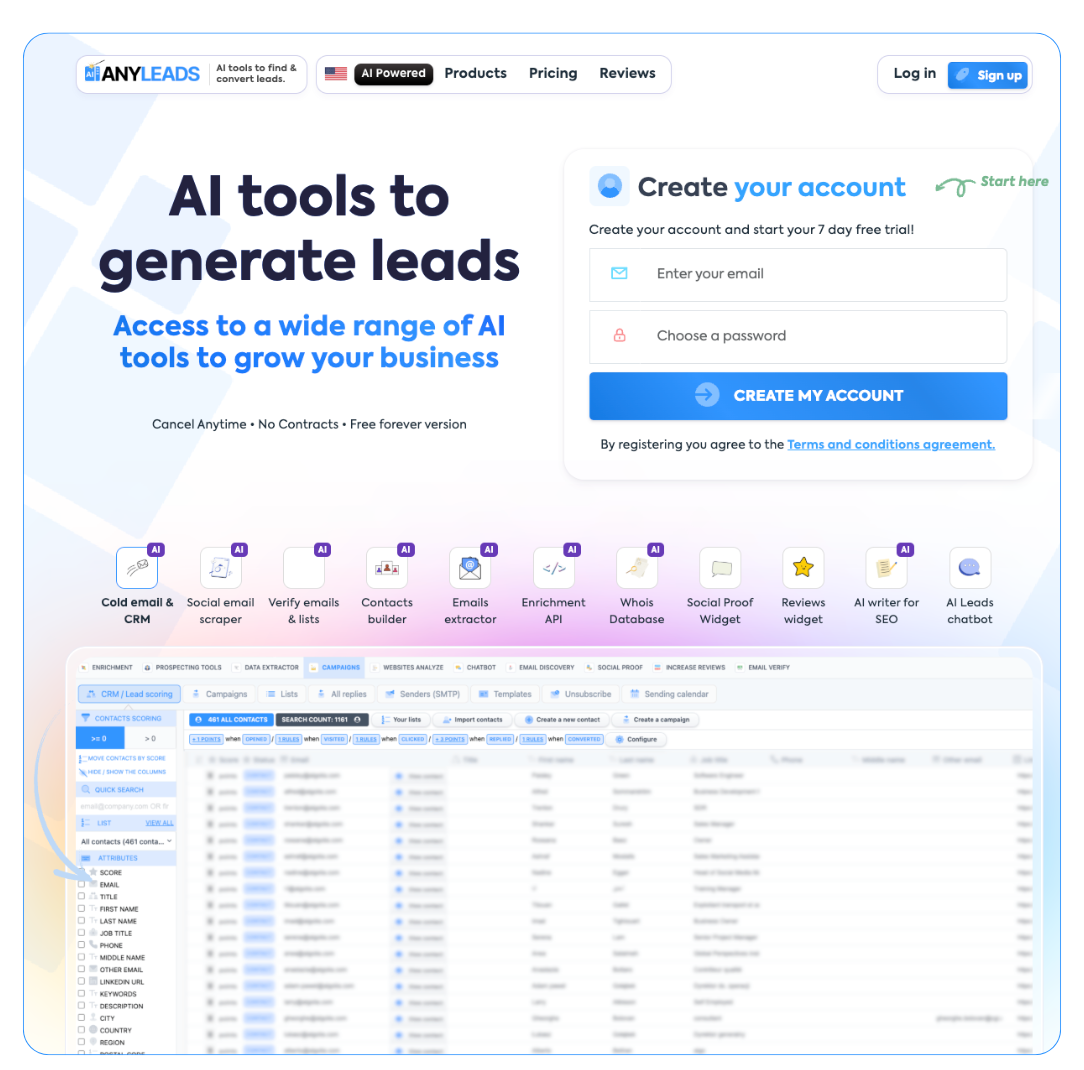 LIMITED SPOTS
All plans are 30% OFF for the first month! with the code WELCOME303
LIMITED SPOTS
All plans are 30% OFF for the first month! with the code WELCOME303

 LIMITED SPOTS
All plans are 30% OFF for the first month! with the code WELCOME303
LIMITED SPOTS
All plans are 30% OFF for the first month! with the code WELCOME303


Now we are going to talk about a crucial factor in email marketing that can feel like a rollercoaster ride at times: the infamous email bounce rate. This little number can make or break your campaign, so let’s dig into the nitty-gritty of what it means.
An email bounce rate is simply the percentage of emails that don't make it to the recipients' inboxes. Think of it as a naughty child tossing your carefully crafted message back at you. It's a critical metric that helps us gauge our email marketing prowess by taking the number of bounced emails and dividing it by the total emails sent. It’s like measuring how many times your cake flopped before you finally nailed that perfect recipe.
When emails bounce, it’s like sending a letter and getting it tossed back to you with a big “return to sender” stamp. For marketers and entrepreneurs, keeping tabs on bounce rates is essential for a clearer view of how effective our campaigns really are. Like trying to figure out if that last romantic dinner was a win or a total disaster.
With the right insights, we can adjust our email strategies to make sure messages actually land where they should. It’s not just about sending emails blindly into the void; it’s about making real connections!
Email bounces come in two flavors, and trust us, one is way more pleasant than the other. Let’s take a moment to break it down.
Encountering these bounce-backs often points to potential issues with your email list quality. Much like a messy kitchen can ruin meal prep, allowing bounces to pile up can hinder our email marketing success.
Staying proactive about managing bounce rates is key. Remember, every bounce tells us something. Are we hitting the right targets or only shouting into the void? So, let’s avoid a bounce-a-thon and keep our email game sharp!
Now we are going to talk about email bounce rates and how they can really impact our outreach. Grab a cup of coffee, and let’s get into it!


Maintaining a low email bounce rate is crucial for anyone trying to build strong connections through email. It's like ensuring your car has enough gas before a road trip; otherwise, you’ll just end up stranded on the side of the digital highway. We've all been there—sending out what we think is a fantastic email, only to have it bounce back like a bad check. This isn't just an annoyance; it can trigger a cascade of issues. Here are a few:
If it feels like you’re driving down a bumpy road with too many speed bumps, consider hitting pause on your current email campaign. Treat it like a pit stop. Use that time to diagnose and troubleshoot the issues.
One of the best remedies? Warm up a fresh batch of email domains. It’s like giving your outreach a shiny new coat of paint. While you’re at it, cleaning your list is essential. Think of it as spring cleaning for your email contacts! You’ll be surprised how much a little decluttering can boost your email reputation over time.
Remember, every great email journey begins with a thoughtful approach to bounce rates. Let’s keep our outreach fast and smooth like a well-oiled machine!
Now, we’re getting into the nitty-gritty of calculating email bounce rates. It’s like solving a treasure map of your email campaign’s performance. Let's explore how we can turn numbers into insights.

Calculating email bounce rates? It’s simpler than trying to figure out why your cat stares at you while you’re on a video call.
Here’s a straightforward breakdown:
Imagine you're sending out 1,000 emails on a Tuesday—you know, the day everyone’s still recovering from weekend shenanigans. Out of those, 20 bounce back—15 hard bounces (like that one friend who always flakes on plans) and 5 soft bounces (the ones stuck in limbo).
So, your email bounce rate is a neat 2%. Satisfying, right?
| Email Type | Count |
|---|---|
| Hard Bounces | 15 |
| Soft Bounces | 5 |
| Total Bounces | 20 |
Now, keeping track of these numbers doesn’t have to give you a headache. Thankfully, we have cool tools out there like Instantly with their fancy analytics dashboard.
This tool not only tracks your open and reply rates but even has an option to filter out those bounced emails. Think of it like having a helpful assistant who keeps your reputation intact while you focus on crafting those witty subject lines. Can the assistant also fetch coffee? We're still waiting on that one.
Now we're going to explore how to gauge the effectiveness of your email campaigns by keeping an eye on bounce rates. Buckle up; it may be a bumpy ride, but it's worth it!
In the hustle and bustle of any industry, we should aim for an email bounce rate of around 2% or lower. Anything between 2% and 5% isn’t a total disaster, but it's like finding an unexpected hair in your soup—certainly a bit concerning!
Once that bounce rate crosses the 5% mark, we might be in hot water. This can damage our reputation with email service providers. Suddenly, those emails we sent could start landing in the spam folder or worse, they might not even go out at all!
So, let’s keep those bounce rates in check, shall we? With a little cleaning, some clever strategies, and maybe a bit of luck, we can boost our email game without landing in the spam abyss!
Next, we will discuss ways to enhance email bounce rates so that our messages land in inboxes instead of the dreaded spam folder. It's like trying to get into an exclusive club—sometimes you’re just left standing outside, and it feels unfair!


Let’s kick things off with double opt-in methods. Imagine inviting someone to a party only for them to ghost you. Not cool, right? By implementing a double confirmation, we ensure that we are only inviting the most enthusiastic attendees—those who genuinely want to be on our list.
Keeping our email list clean is critical. Think about it: would we let rotten tomatoes sit in a salad? Of course not! That's why it’s essential to vet out those uninterested souls. For larger lists, it’s wise to automate this tedious chore. Email marketing tools can help us shoo away invalid addresses faster than we can say “clean slate.” A good rule of thumb? Check at least once a year to keep things fresh!
Next up, let’s talk domain authentication. Using SPF, DKIM, and DMARC records is like getting your email ID verified at the door. It shows the bouncers—aka the email providers—that we mean business. Plus, using a brand domain instead of a personal one (like that old @gmail.com we use for everything) gives us a dash of professionalism. With that handy authentication, our emails are less likely to end up in spam purgatory, which is definitely where we don’t want to be!
Now, let’s discuss our sending reputation. It’s not an exact science, but the content is key. If we send the same stale bread over and over, our subscribers might start looking elsewhere. Here’s a quick recipe to up our email game:
Lastly, let’s avoid that spam label! Just one subscriber muttering “spam” can knock us off our delivery game. If we hit a 0.1% spam rate, it’s like our mail/accountability score plummeted. Yikes! Keeping our content honest and engaging will help us from falling into that trap. So, let’s keep those emails flowing and our reputation shining!
Now we are going to talk about achieving email deliverability. It’s quite a ride, folks! So, grab your favorite drink, and let’s jump into how we can ensure our emails land in the right spots.
Email bounce rates can feel like the horror movie villain that just won’t die. We’ve all dealt with our fair share of emails that vanish into the spam abyss, and honestly, that’s just not what we want. So, let’s ward off those unwanted bounces with some tips that’ll make our emails as welcome as a warm slice of pie.
Just remember, keeping our email lists healthy is an ongoing process, but with a few smart moves, we can keep those pesky bounces at bay. As we tackle this, we might even find ourselves laughing about those first awkward emails we sent — they say what doesn’t kill us makes us stronger! With a little humor and dedication, we can turn email marketing into a fine art.
So, buckle up, apply these tips, and soon you’ll be sending emails smoother than a well-rehearsed stand-up comedy set!

